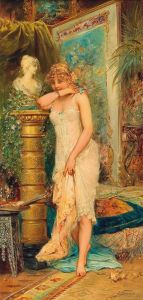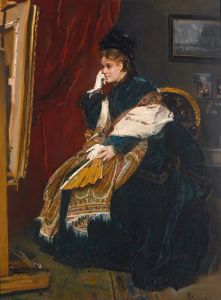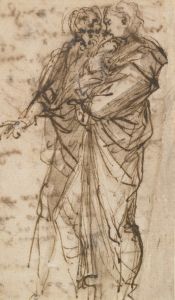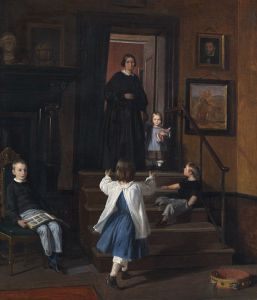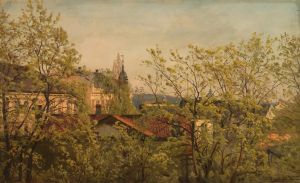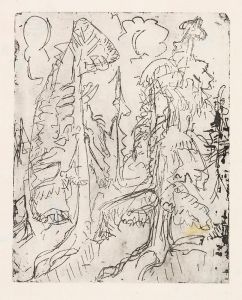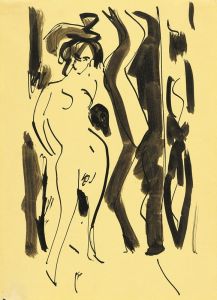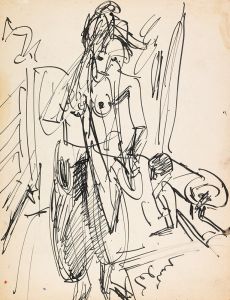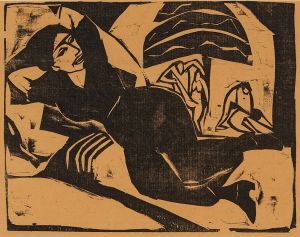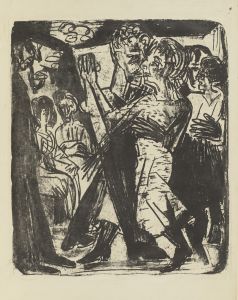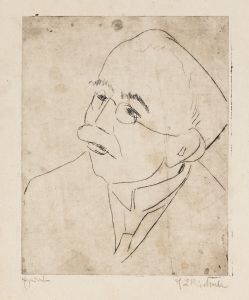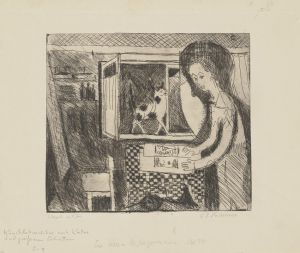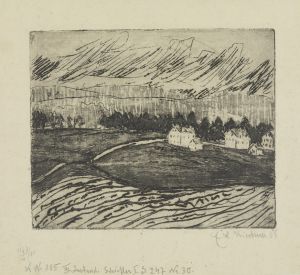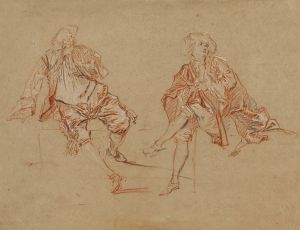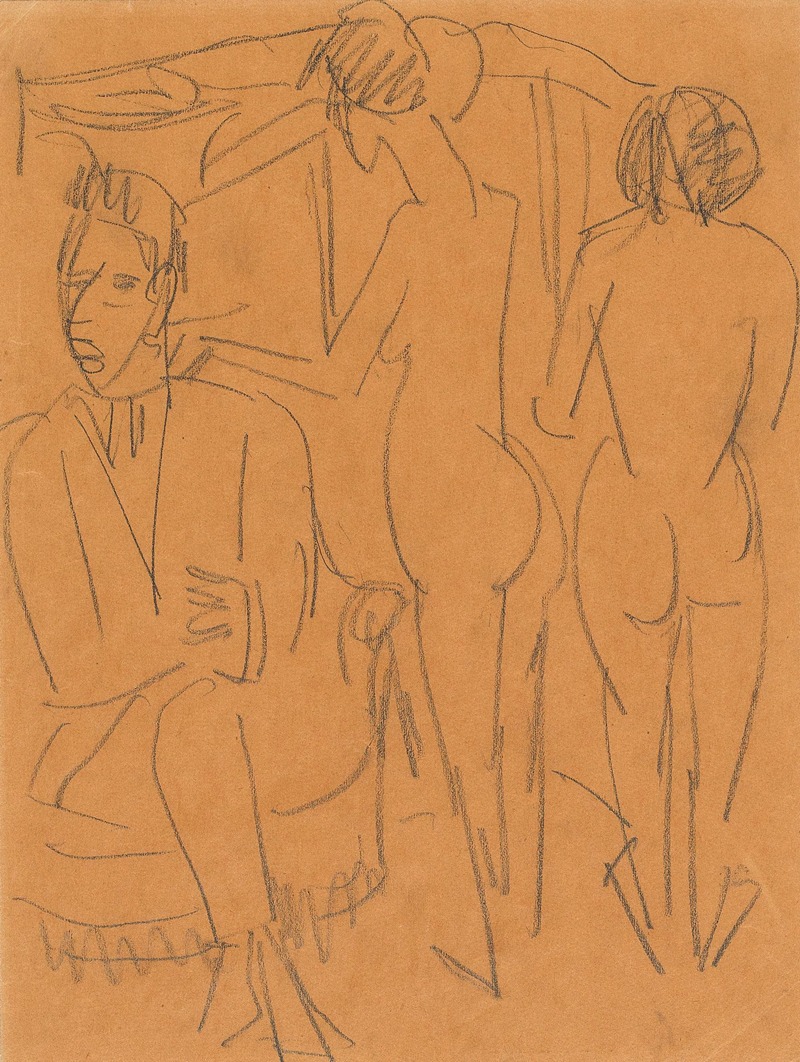
Mann und zwei Akte im Atelier
A hand-painted replica of Ernst Ludwig Kirchner’s masterpiece Mann und zwei Akte im Atelier, meticulously crafted by professional artists to capture the true essence of the original. Each piece is created with museum-quality canvas and rare mineral pigments, carefully painted by experienced artists with delicate brushstrokes and rich, layered colors to perfectly recreate the texture of the original artwork. Unlike machine-printed reproductions, this hand-painted version brings the painting to life, infused with the artist’s emotions and skill in every stroke. Whether for personal collection or home decoration, it instantly elevates the artistic atmosphere of any space.
Ernst Ludwig Kirchner, a prominent German expressionist painter and one of the founding members of the influential art group Die Brücke, created the painting "Mann und zwei Akte im Atelier" (translated as "Man and Two Nudes in the Studio") during a period marked by experimentation and a bold approach to form and color. Kirchner's work is characterized by its vivid use of color, dynamic compositions, and a focus on the human figure, often exploring themes of modernity and the human experience.
"Mann und zwei Akte im Atelier" is a striking example of Kirchner's exploration of the human form and his interest in the relationship between figures and their environment. The painting depicts a scene set in an artist's studio, featuring a male figure and two nude female figures. This composition is typical of Kirchner's work, which often includes nudes and studio settings, reflecting his interest in the intimate and personal aspects of artistic creation.
Kirchner's style is evident in the painting's bold, expressive brushstrokes and the use of vibrant, non-naturalistic colors. These elements are hallmarks of the expressionist movement, which sought to convey emotional experience rather than physical reality. The figures in the painting are rendered with a sense of immediacy and energy, capturing the dynamic interaction between the subjects and their surroundings.
The setting of the studio is significant in Kirchner's work, as it represents a space of creativity and introspection. The inclusion of the male figure, possibly a self-portrait or a representation of the artist, alongside the female nudes, suggests a contemplation of the artist's role in relation to his subjects. This theme is recurrent in Kirchner's oeuvre, where the artist often places himself within the scene, blurring the lines between observer and participant.
Kirchner's work, including "Mann und zwei Akte im Atelier," was influenced by various sources, including African and Oceanic art, which he admired for their perceived authenticity and emotional power. This influence is visible in the simplified forms and exaggerated features of the figures, which convey a sense of raw emotion and primal energy.
The painting also reflects the broader cultural and social changes occurring in Germany during the early 20th century. Kirchner and his contemporaries were responding to the rapid modernization and urbanization of society, seeking to capture the tensions and anxieties of the modern world through their art. The expressionist movement, with its emphasis on subjective experience and emotional intensity, provided a means for artists like Kirchner to explore these themes.
"Mann und zwei Akte im Atelier" is an important work within Kirchner's body of work, exemplifying his innovative approach to composition and his commitment to exploring the complexities of human experience. The painting remains a testament to Kirchner's skill as an artist and his ability to convey profound emotional depth through his distinctive style.
Overall, Kirchner's contribution to the expressionist movement and his exploration of the human condition continue to be celebrated and studied, with works like "Mann und zwei Akte im Atelier" offering insight into the artist's unique vision and the cultural context of his time.





